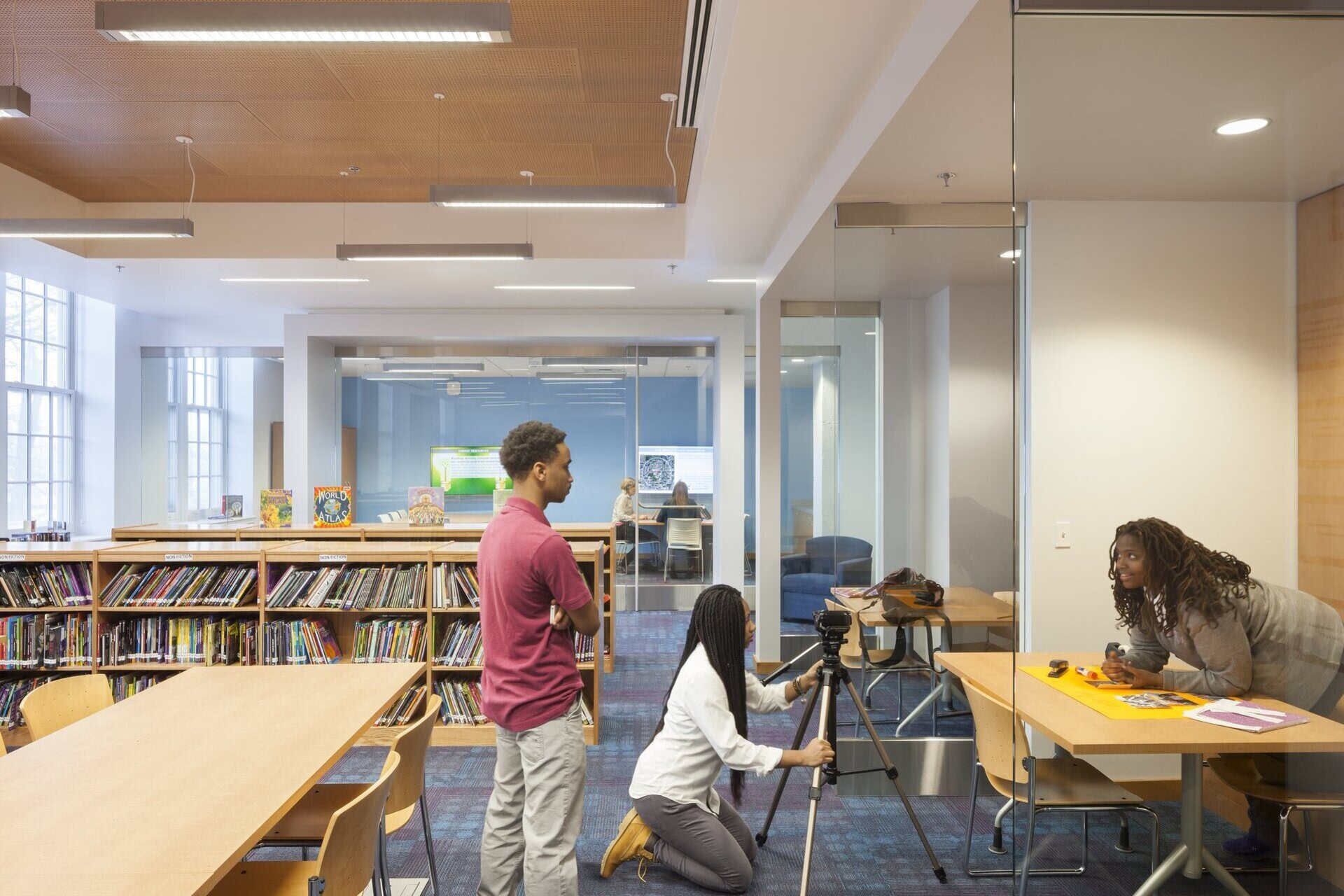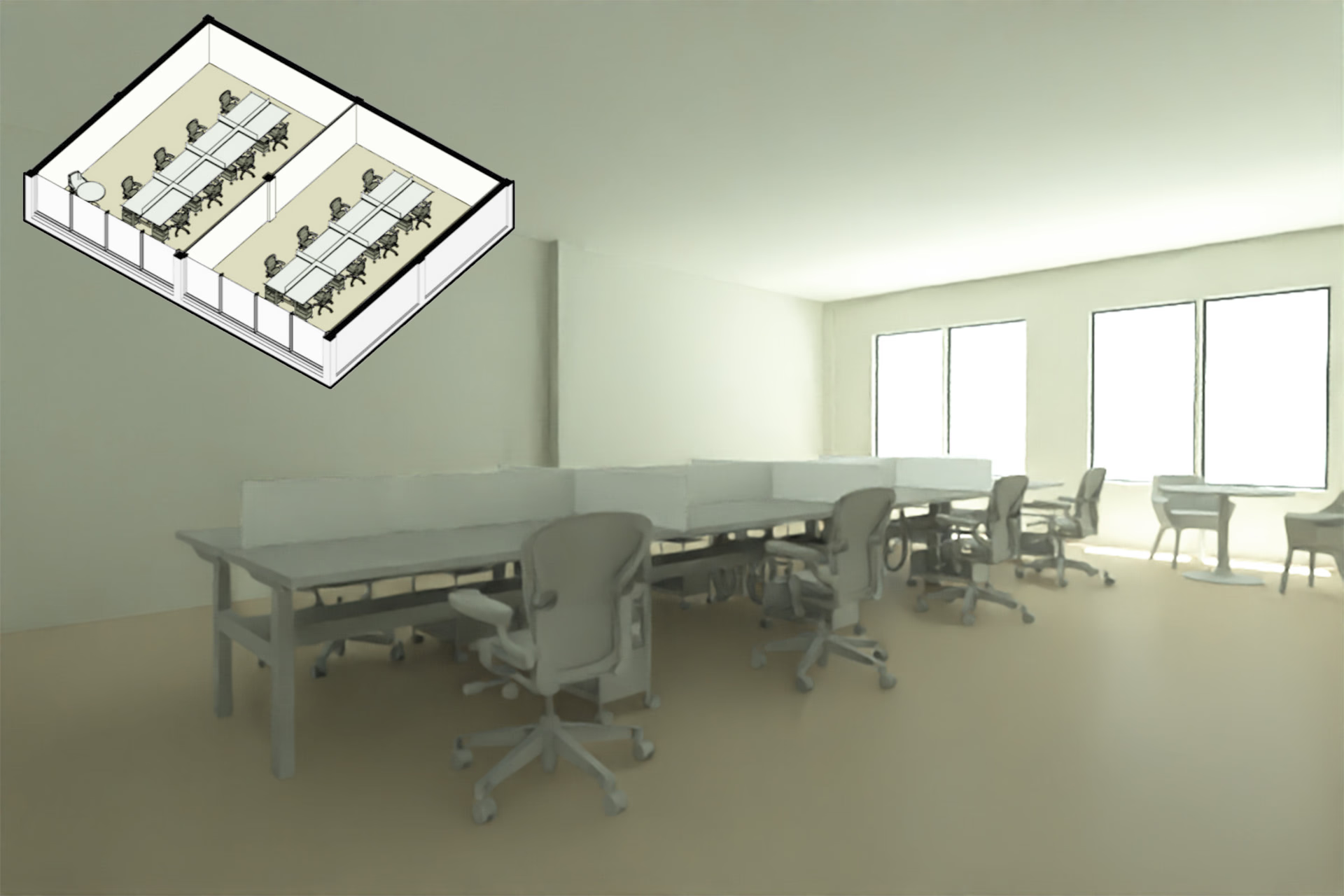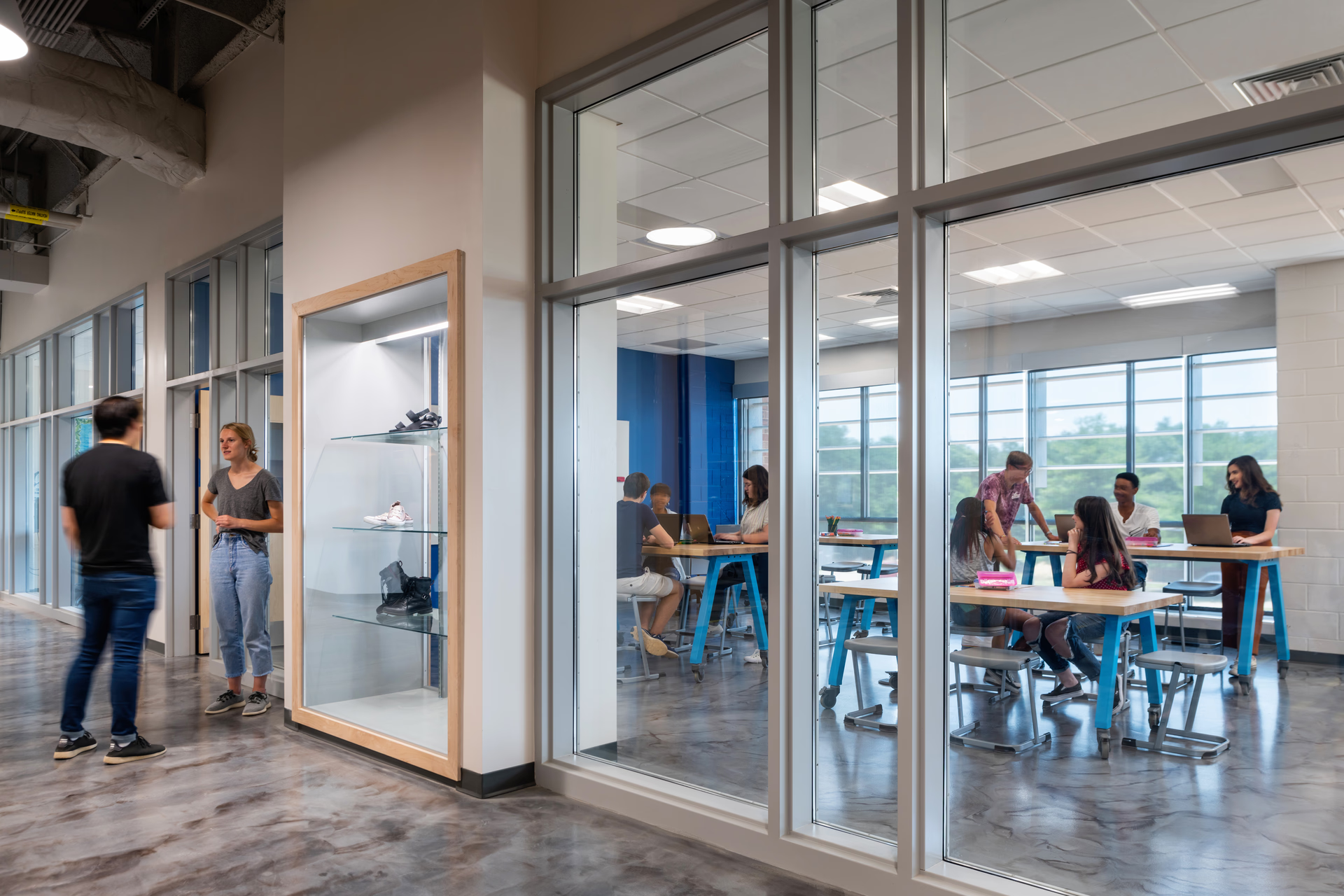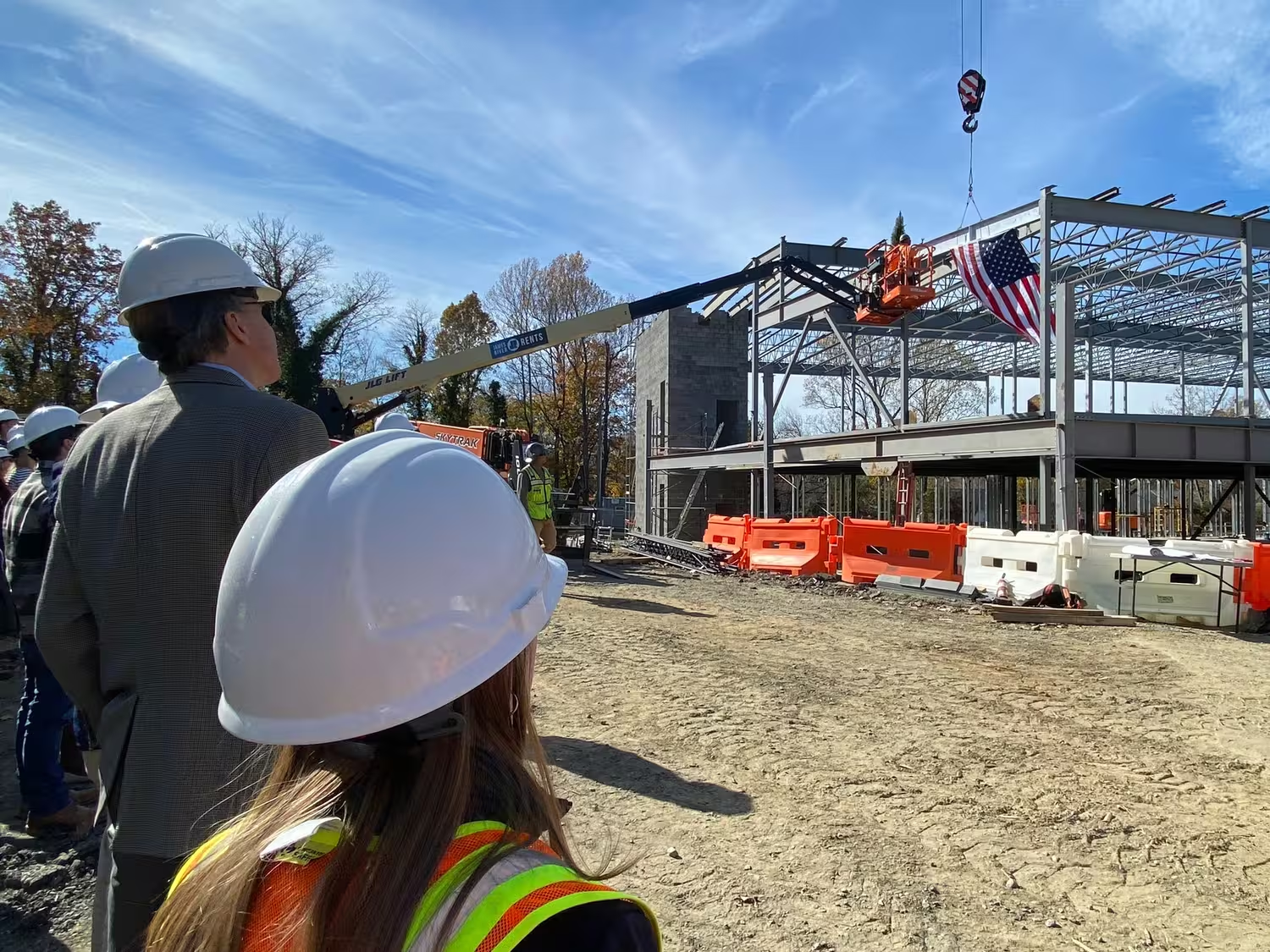Our research shows how designers can increase the circadian health potential of existing buildings, even when the envelope is outside the project scope.
We know that circadian health, or the alignment of the body’s circadian rhythm to the natural day-night cycle, is an important part of wellness, and that access to daylight in indoor spaces promotes it. We also know that the reuse of existing buildings is crucial for a sustainable future. But what do you do when an existing building is not supporting circadian health?
In general, the best way to increase a building’s circadian health potential is to increase the window-to-wall ratio (WWR) by creating larger window openings. We’ve done this for many renovation projects, including the Rosa Parks Federal Building and Marie Reed Community Learning Center. However, this approach won’t work for some renovations, either because they are limited to the building interior or because changes to the façade are prohibited by historic preservation requirements.

Good news: Our AIA-sponsored research into how the built environment can support circadian health has yielded several strategies that don’t involve the building envelope at all. Our research shows that even for projects with a limited design scope, successful daylighting design for circadian health is highly achievable.
Download our findings here, or keep reading for five interior-only design tactics ranked from least to most impactful—you might be surprised at how effective something as simple as repainting can be!
A NOTE ON METHOD
The results cited below are based on digital simulations, or “shoe-box models,” that compared the difference in the circadian health potential of a space when a single design variable was manipulated. The simulated space we studied was a 30-by-40-ft office space with windows on one side and 16 desks. We studied a variety of design changes one by one to see which had the most pronounced impact on circadian daylight exposure.

And now, here they are: five design strategies for promoting circadian health without increasing WWR!
5. Go to the wall
We were surprised to find that incorporating an opaque wall dividing our shoebox model longitudinally down the center improved the workstations’ circadian lighting performance relative to a condition with no center wall. This is because the light reflected off the partition brought daylight deeper into the space. An opaque half-height wall also worked well. A fully glazed interior wall didn’t increase circadian daylight exposure, and a translucent wall actually reflected less light than the opaque one.

4. Raise the roof (or at least the ceiling)
In our modeling, raising the ceiling height from 8 feet to 12 feet resulted in significant gains to circadian daylight exposure. For existing spaces with a dropped ceiling, designers should evaluate whether the ceiling can be removed or raised. For even better results, it should receive a brighter finish (see strategy #1).

3. Get up and move
A building occupant assigned to an office or desk with low circadian health potential can take matters into their own hands by moving to spaces with more daylight when possible. Designers should provide shared spaces like kitchens, break rooms, or courtyards with daylight access for this purpose. Because these shared spaces are not regularly occupied, they are a good use for areas of a building with abundant daylight but occasional glare.

2. Take direction
View direction is a critical component of circadian lighting. Unlike lighting that supports visual acuity, for daylight to provide circadian health benefits it must be provided at occupants’ eye level. For the most equitable distribution of circadian daylight exposure, workstations should be positioned perpendicular to the glazed façade. For workstations far away from the façade, rotating the desk to face the window can improve circadian health potential.

1. Finish strong
Our study found that the reflectance of surfaces like walls, ceilings, floors, and desktops presents a huge opportunity to increase circadian daylight exposure—in fact, it can be even more important than WWR for promoting circadian health. Our modeling showed that a space with a WWR of 40% and bright surfaces performed better than a space with a WWR of 75% with dark surfaces; in the first scenario, 25% more seating positions met the circadian lighting threshold.

What’s next?
Our findings are very encouraging for designers of existing building renovations. While percentage of glazed are on a façade is important, our research shows that interventions much lower in cost and complexity than façade modifications can be very effective at increasing circadian daylight exposure. Even better, the strategies we’ve outlined above can be combined to achieve outstanding gains in circadian health potential for building occupants.
You can download our full research report, as well as a condensed executive summary and a graphic guide for designers, here.







